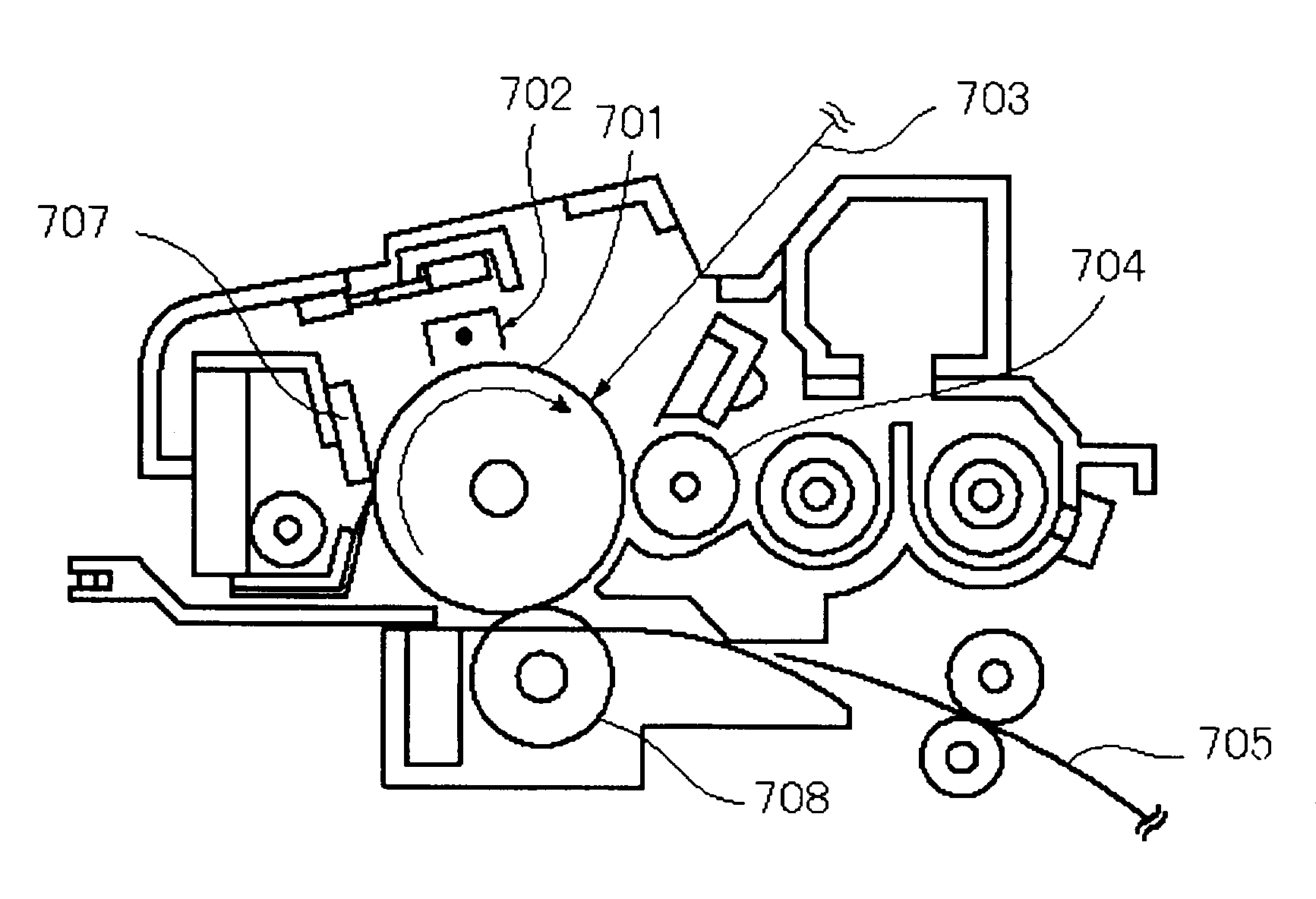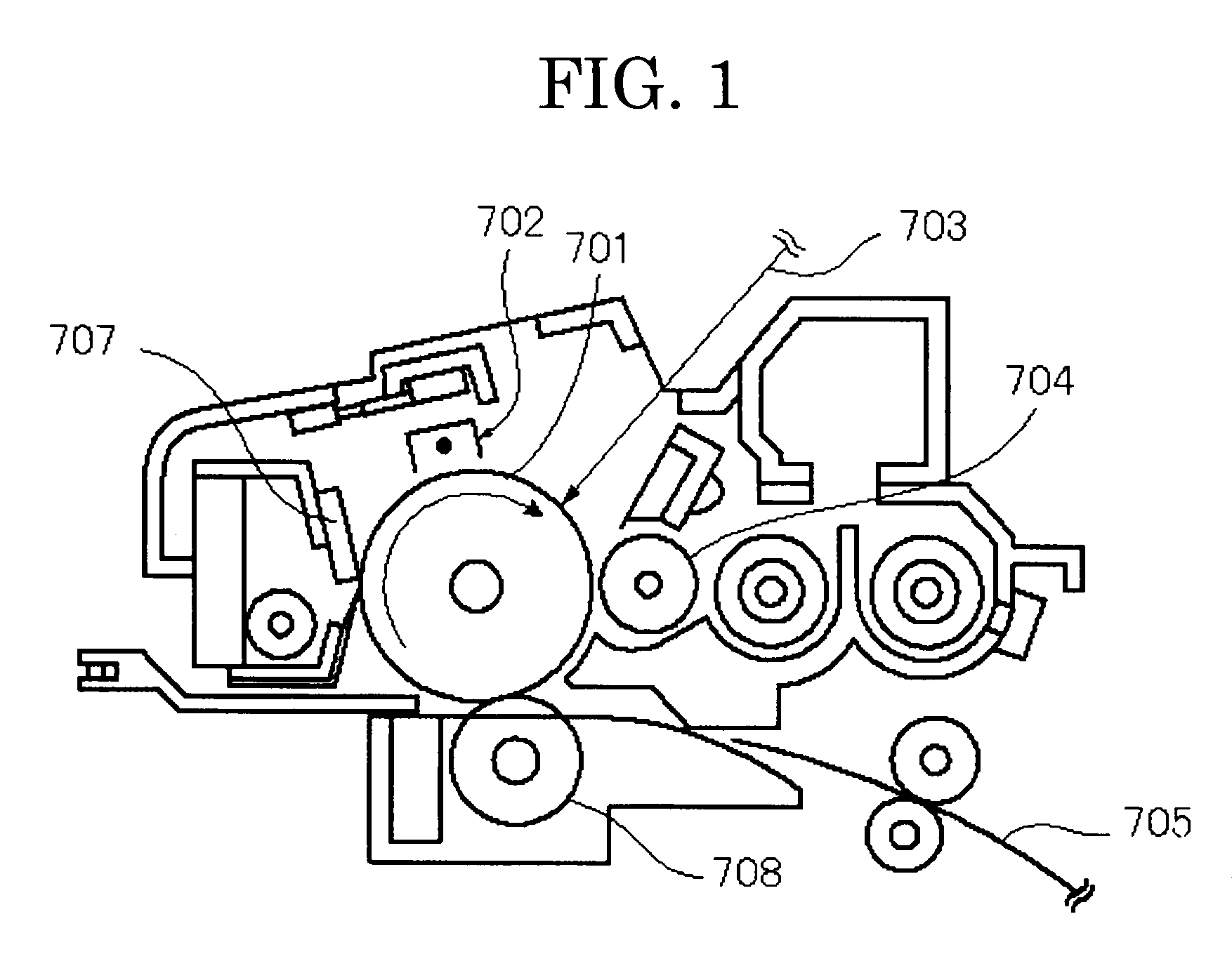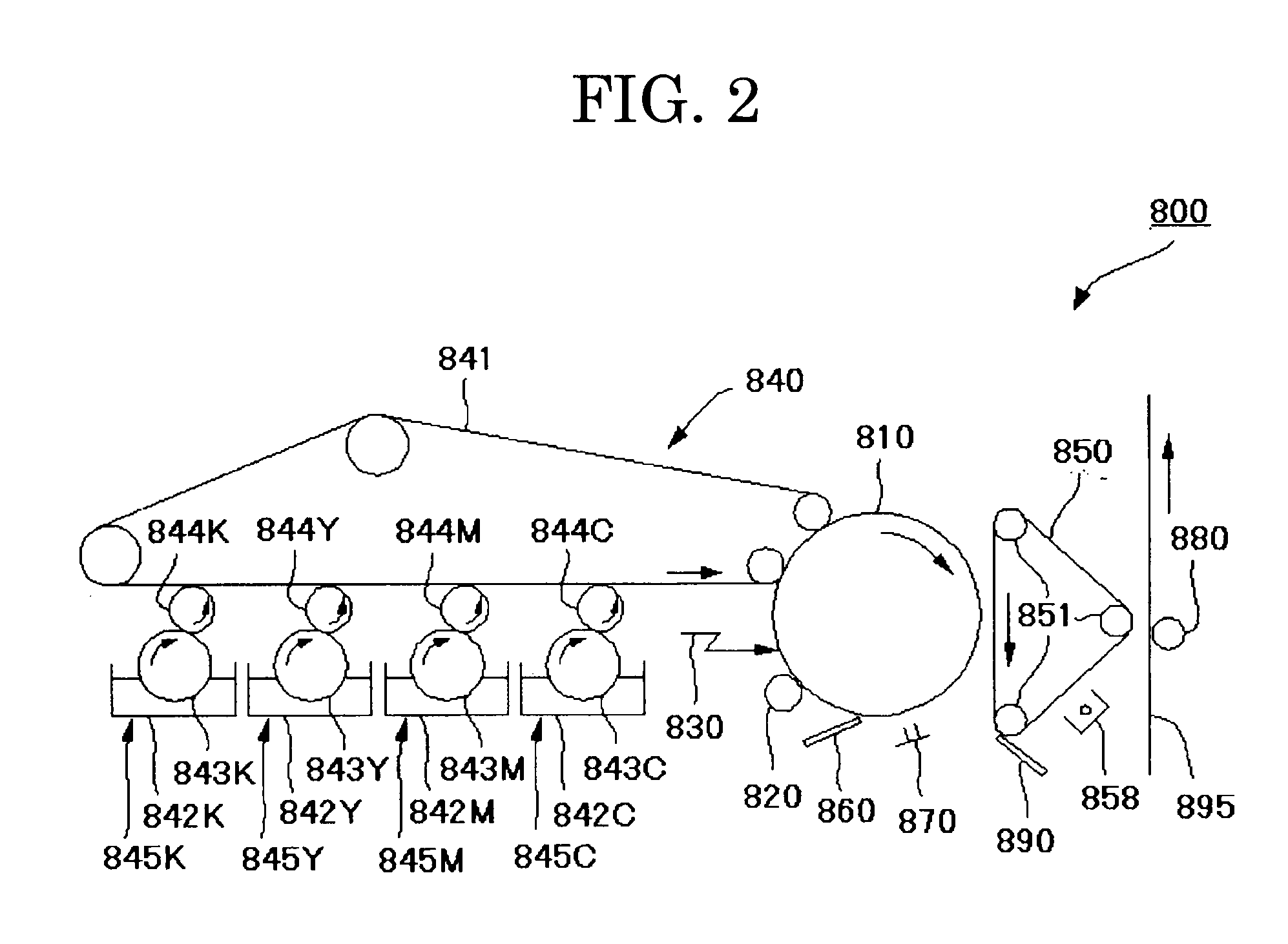Toner for developing electrostatic charge image, image forming method and image forming apparatus
- Summary
- Abstract
- Description
- Claims
- Application Information
AI Technical Summary
Benefits of technology
Problems solved by technology
Method used
Image
Examples
synthesis example 1
[0273]Synthesis of Colorant 1 Obtained by Reacting a Polymer with a Basic Dye
[0274]A 1L four-neck flask equipped with a stirrer, condenser, thermometer, and nitrogen gas inlet tube was purged with a nitrogen gas, and 25 g of distilled water was charged therein, and then the temperature of the distilled water was increased up to 90° C. by heating the flask in an oil bath. Into the heated distilled water, an aqueous monomer solution in which 125 g of sodium p-styrene sulfonate was dissolved in 360 g of distilled water, and an aqueous polymerization initiator solution in which 2 g of ammonium persulfate was dissolved in 15 g of distilled water were separately dripped through a dropping funnel for 3 hours, and then the mixture was polymerized for 2 hours. Thereafter, the reaction solution was cooled down to room temperature to thereby obtain an aqueous polymer solution. The thus obtained aqueous polymer solution was poured into methanol so as to deposit and refine a polymer. Fifty (50) ...
synthesis example 2
[0278]Synthesis of Colorant 2 Obtained by Reacting a Polymer with a Basic Dye
[0279]Colorant 2 was obtained in the same manner as in Synthesis Example 1, except that Cathilon Yellow GLH was replaced with Cathilon Brilliant Red 4GH (C.I. Basic Red 14, manufactured by Hodogaya Chemical Co., Ltd.).
synthesis example 3
[0280]Synthesis of Colorant 3 Obtained by Reacting a Polymer with a Basic Dye
[0281]Colorant 3 was obtained in the same manner as in Synthesis Example 1, except that Cathilon Yellow GLH was replaced with Cathilon Blue 5GLH (C.I. Basic Blue 45, manufactured by Hodogaya Chemical Co., Ltd.).
PUM
 Login to View More
Login to View More Abstract
Description
Claims
Application Information
 Login to View More
Login to View More - R&D
- Intellectual Property
- Life Sciences
- Materials
- Tech Scout
- Unparalleled Data Quality
- Higher Quality Content
- 60% Fewer Hallucinations
Browse by: Latest US Patents, China's latest patents, Technical Efficacy Thesaurus, Application Domain, Technology Topic, Popular Technical Reports.
© 2025 PatSnap. All rights reserved.Legal|Privacy policy|Modern Slavery Act Transparency Statement|Sitemap|About US| Contact US: help@patsnap.com



